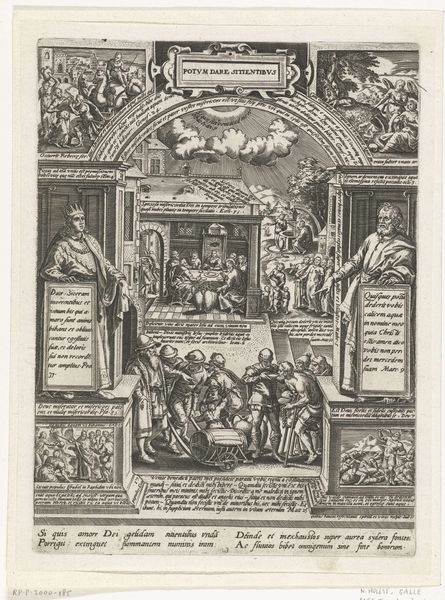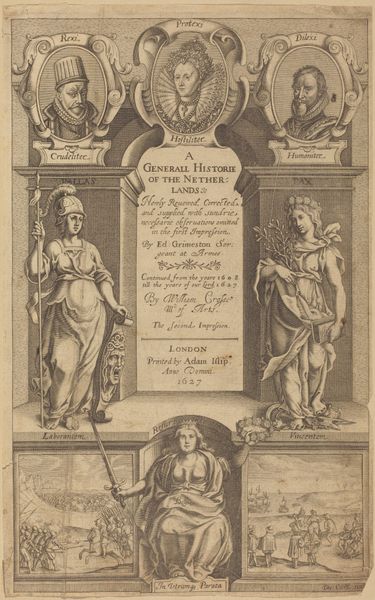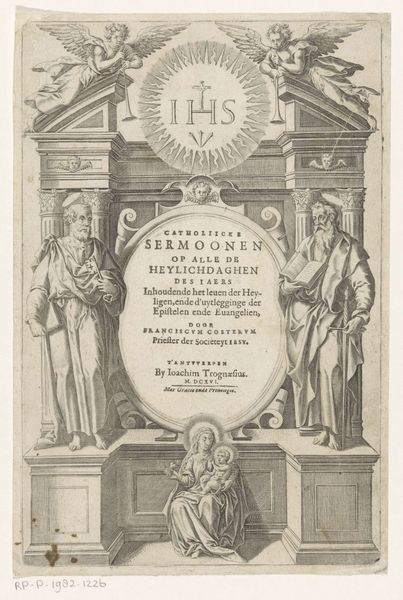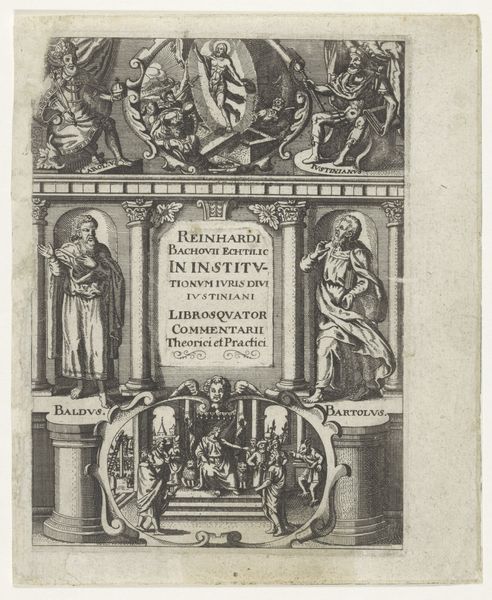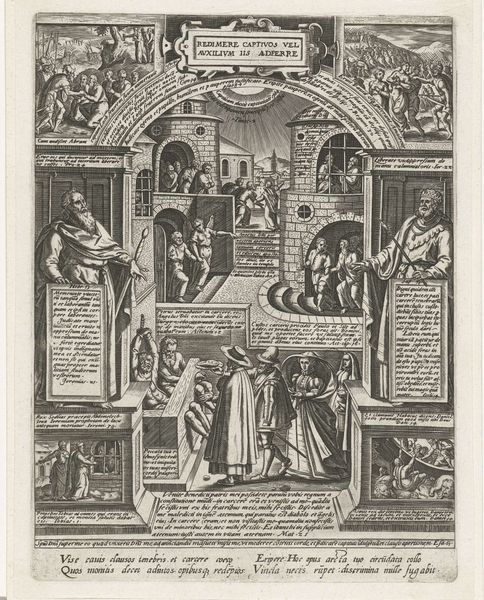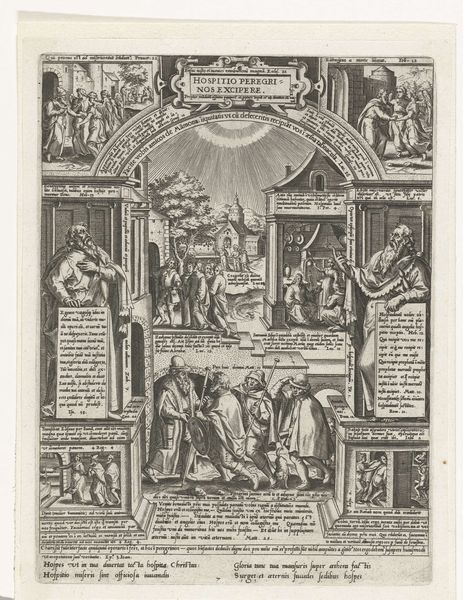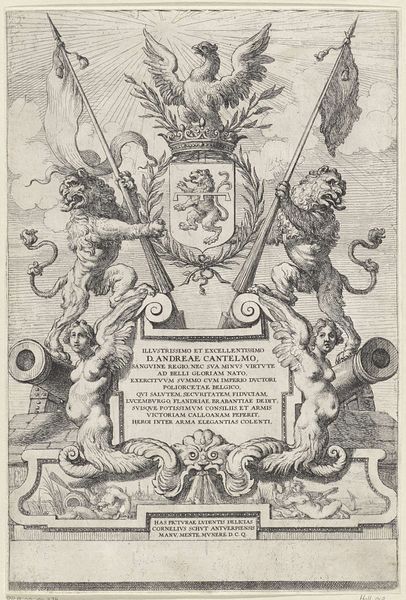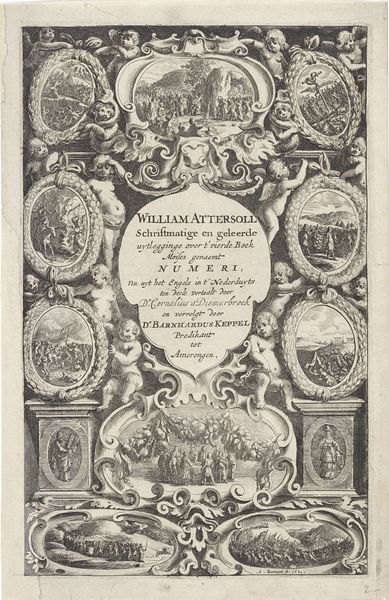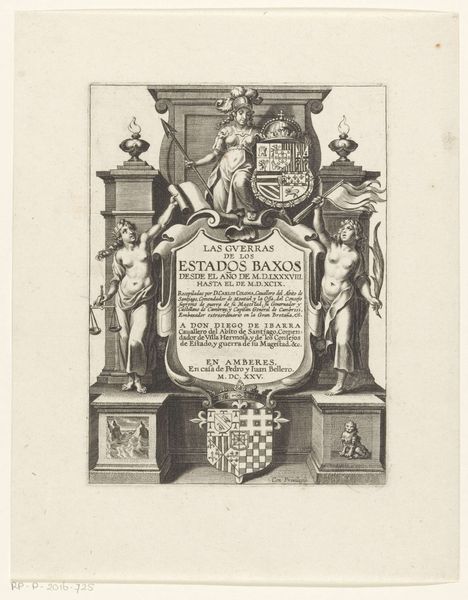
print, engraving
#
allegory
#
baroque
# print
#
figuration
#
line
#
history-painting
#
engraving
Dimensions: height 311 mm, width 213 mm
Copyright: Rijks Museum: Open Domain
Editor: This engraving, "Petrus, Paulus en Religie, Minerva en Pax" from 1643 is intriguing. The line work is incredibly detailed. The figures of Peter and Paul feel very grounded in contrast with the floating angelic figures above. How do you read this piece? Curator: For me, it's crucial to look at the process. Engravings like these weren’t just aesthetic objects, they were products of a very specific labor division and material reality. Think about the engraver: the training they needed, the tools they used, the economic system that supported their work. How does understanding that labour change how we perceive the finished print? Editor: That’s interesting; I never considered it that deeply. What about the content, like the religious and allegorical figures? Curator: Exactly! This piece functions as a title page, an advertisement almost, for the theological text within. Consider the symbolic value of materials used. Cheap, reproducible prints allowed for the mass distribution of knowledge and religious ideology. How does that affect our understanding of Baroque art and its function within society? Does this mass reproduction degrade the traditional status of "art"? Editor: I see what you mean. It challenges this idea of a unique artwork versus something intended for widespread use. The material really drives the message. I am also noticing the emphasis given to the authorship/editorship displayed so prominently in the image - the manual labor of the engraver (R. P. Petri de Vos) appears smaller at the bottom... interesting! Curator: Yes. It's a reflection of societal structures - then and now! It changes our reception of the work, doesn't it? Editor: Absolutely. It's like peeling back layers, understanding the art, the people involved, and why it even exists in the first place! Curator: Indeed. Art isn’t created in a vacuum, but through work and exchange within society.
Comments
No comments
Be the first to comment and join the conversation on the ultimate creative platform.
